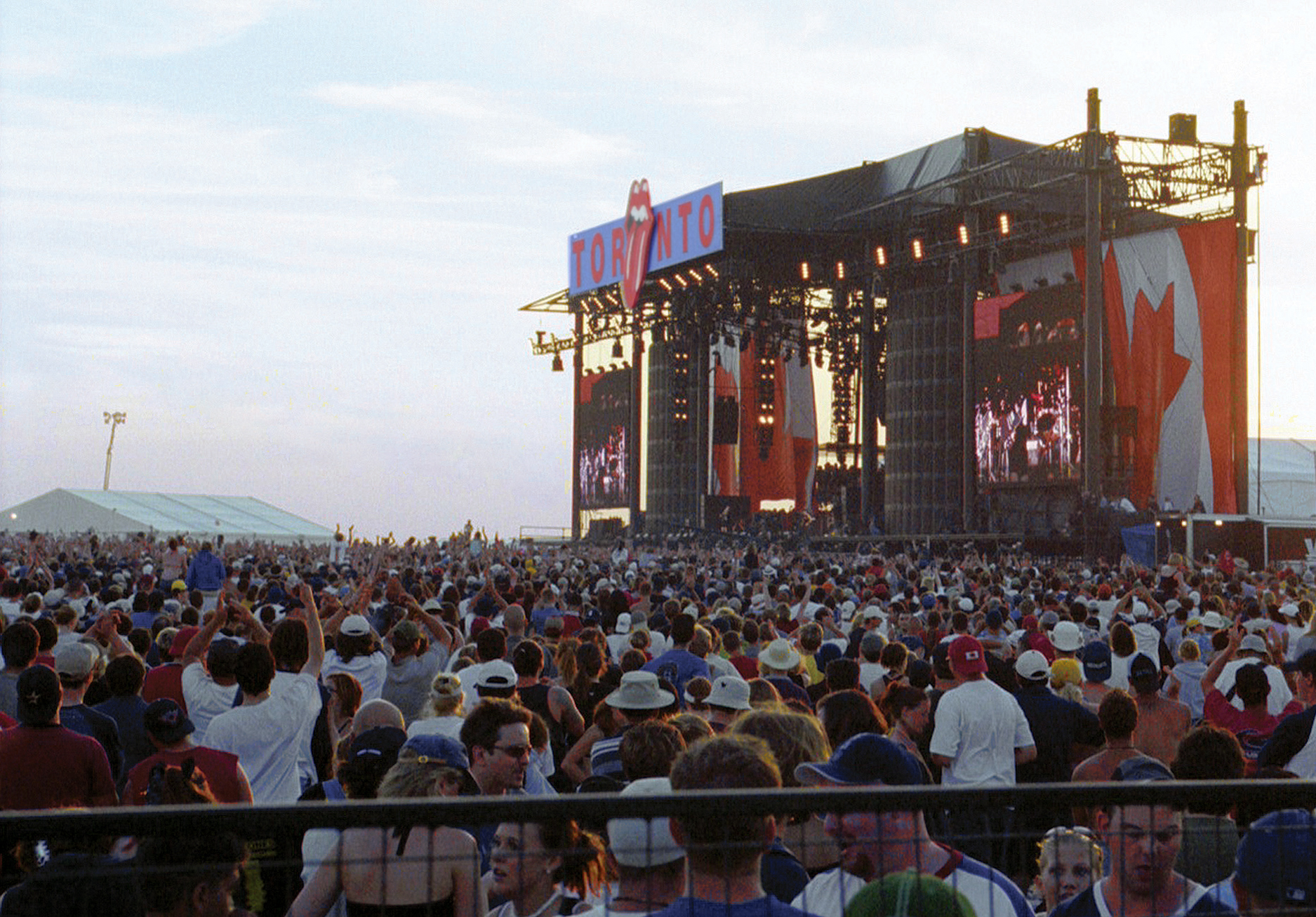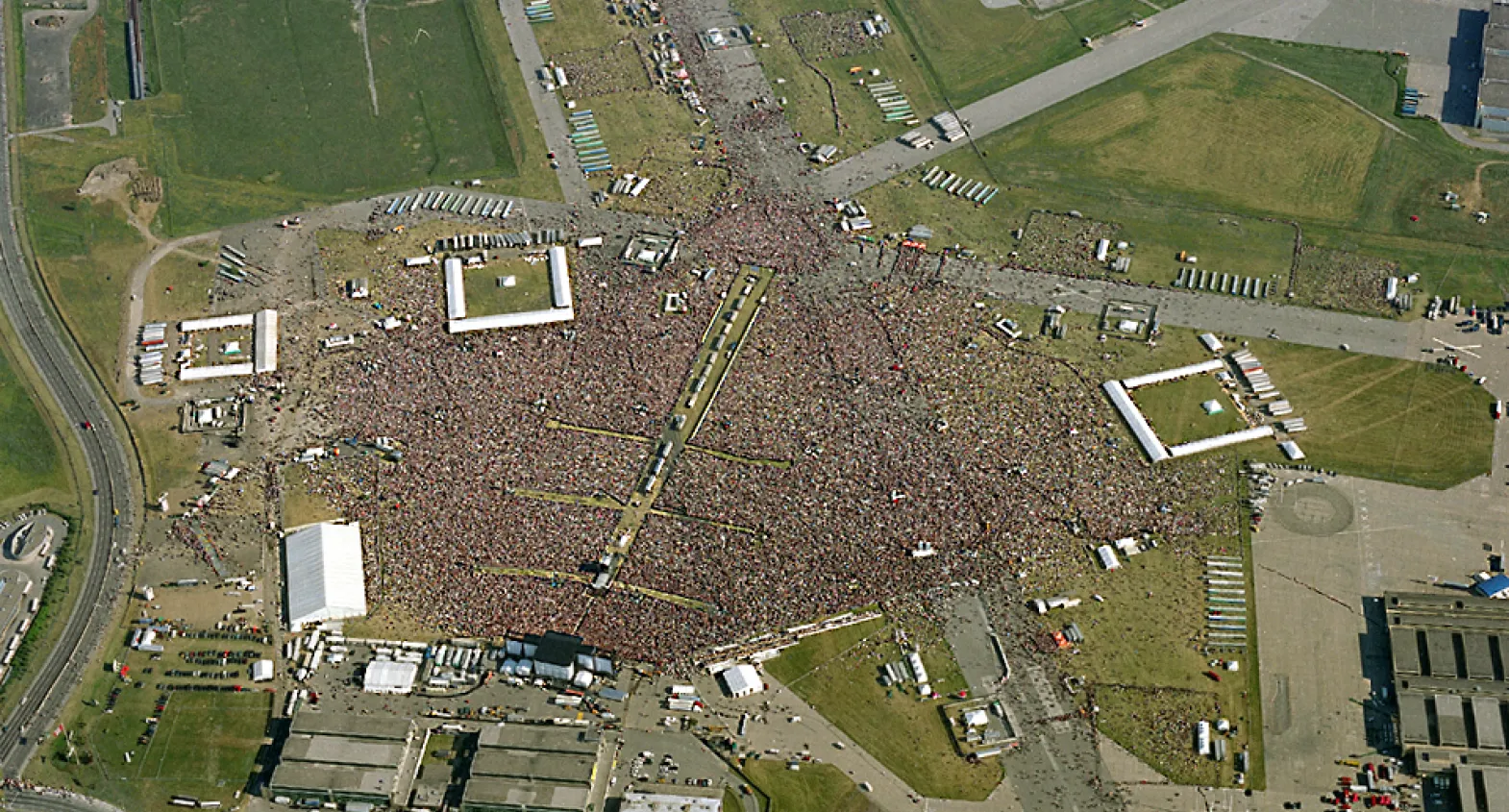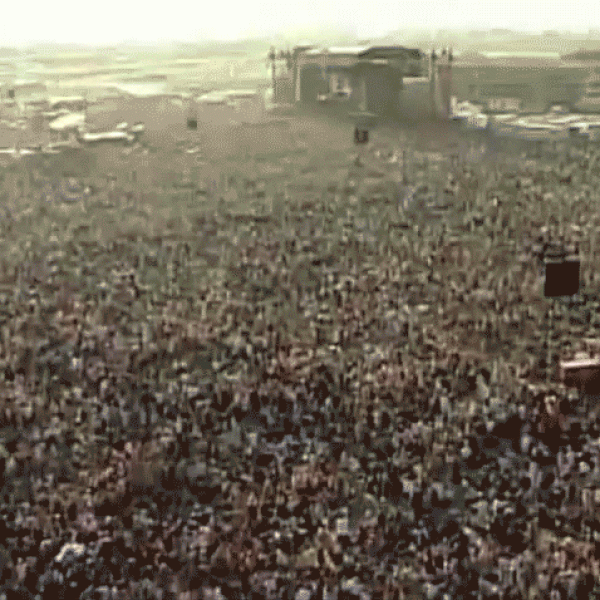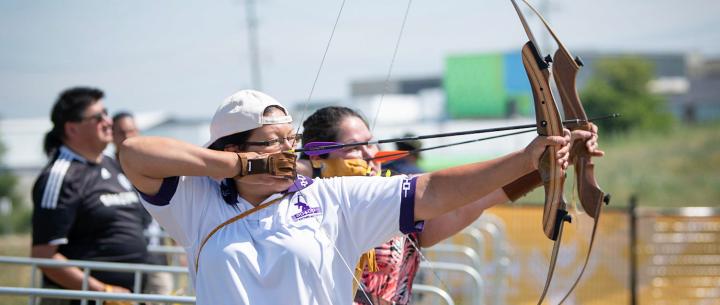It was the biggest rock concert in Canadian history, and one of the largest outdoor ticketed events ever staged in North America.
On July 30, 2003, nearly half a million people flocked to Downsview Park for an eleven hour rock extravaganza featuring some of the biggest names in music: AC/DC, The Guess Who, Rush, Justin Timberlake, the Isley Bros, Sam Roberts, and a British band called The Rolling Stones.

It was a concert with a very public purpose to restore the City’s reputation as a place to visit.
The idea originated with Liberal Senator Jerry Grafstein, who had attended a security conference in Europe earlier, where he had been introduced as the “Senator from SARS”.
The reference was to Severe Acute Respiratory Syndrome (SARS), a viral respiratory disease that hit Toronto particularly hard in the spring of 2003. Three hundred and seventy-five people in the city were infected, and forty-four died. SARS had a devastating impact on the city’s economy. After the World Health Organization issued a travel advisory for Toronto, hotel bookings dropped, an estimated one-third of hotel and hospitality workers lost their jobs, and nearly 100,000 expected visitors did not show up.
So Senator Grafstein huddled with Toronto Liberal MP Dennis Mills and they came up with an answer: classic rock. ''This concert will change our international reputation overnight,'' Mills boasted.

The two politicians presented their vision to Michael Cohl, the city’s premier concert promoter, best known as the man behind the Rolling Stones. Cohl told them he would need about seven million dollars to stage the show. Mills and Grafstein knew most of the money would have to come from private sources.
Molson Breweries signed on as the major sponsor, contributing about five million dollars. To make sure the concert was accessible to everyone, organizers charged just $21.50 for a ticket, and they set a very ambitious timetable of less than two months to overcome a mountain of logistical challenges.

Michael Cohl was able to convince the Rolling Stones to headline what was officially called Molson Canadian Rocks for Toronto, but became better known as SARSstock. “You’re here, and we’re here, and Toronto’s back – it’s booming,” Mick Jagger proclaimed when the Stones finally took the stage at 10:00 PM, ten hours after the concert began.
The band had agreed to donate half of the net proceeds of licensed Rolling Stones merchandise sold at the concert to two relief funds set up by Molson to aid healthcare and hospitality industry workers who had been adversely affected by SARS. A dollar from each of the roughly 400,000 tickets sold also went to the funds.

More Stories

2018 Masters Indigenous Games
Inter-tribal athletics competitions have been a meaningful part of Indigenous peoples’ way of life for millennia, and that tradition continues into the present day. The City of Toronto played host to the 2018 Masters Indigenous Games on July 13-15, which centred around a specially created “Cultural Village” at Downsview Park

Downsview Park History
The Park emerged out of a commitment of the Government of Canada. In 1994-1995, the government announced that it would decommission the Canadian Forces Base Toronto and that the land would be set aside for development, recreational, and broader public uses.
